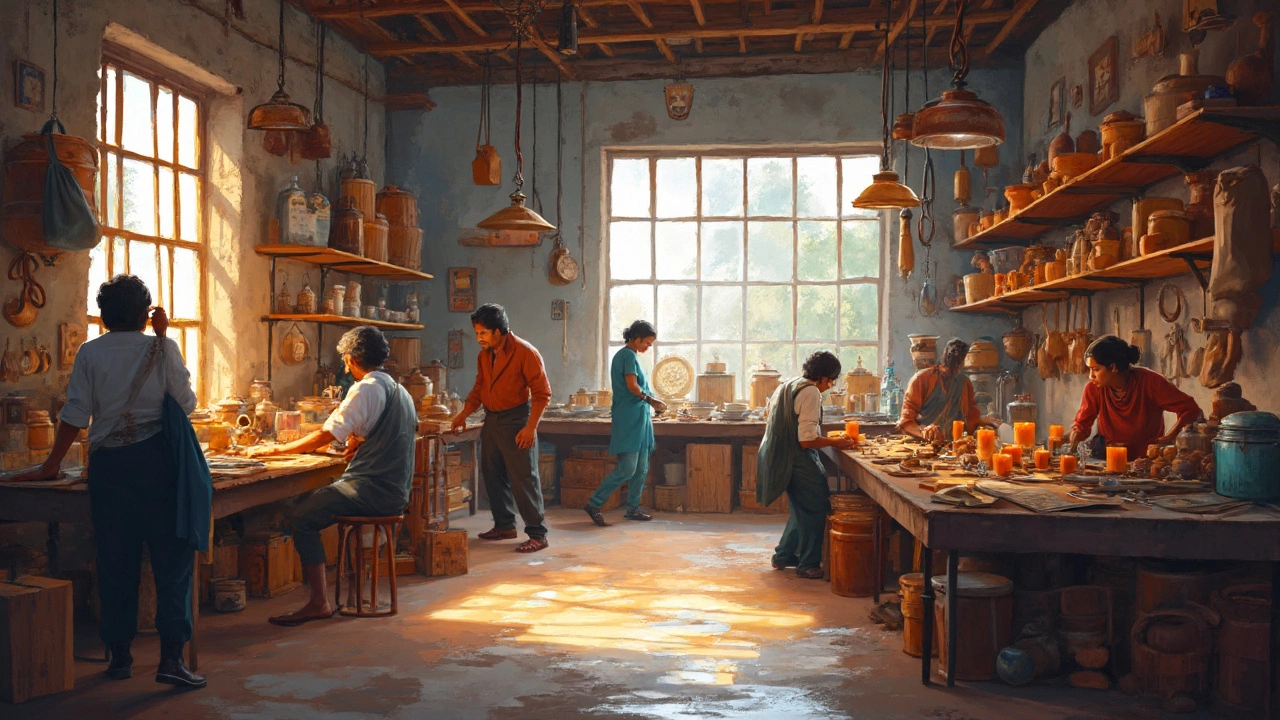Handmade Products in India – Trends, Sources and Practical Tips
If you’re scrolling through endless catalogs of mass‑produced items, handmade products feel like a breath of fresh air. They carry a story, a personal touch, and often a higher profit margin for small businesses. In India, the demand for authentic crafts is booming, driven by consumers who want uniqueness and by brands looking to add a local flavor to their lines.
Where to Find Authentic Handmade Products
The first step is locating reliable makers. Traditional craft clusters such as Jaipur for block printing, Bhilwara for hand‑loom textiles, and Moradabad for metalwork are still thriving. Visiting local trade fairs, like the India International Trade Fair in Delhi, lets you meet artisans face‑to‑face and inspect product quality on the spot. Online platforms like IndiaMART and regional artisan networks also list verified sellers, but always ask for samples before placing big orders.
When you contact a maker, ask about the raw materials they use. Natural fibers, locally sourced dyes, and eco‑friendly adhesives are hallmarks of genuine handmade goods. Knowing the supply chain helps you evaluate consistency and pricing. Most artisans can share a short video of their workshop, giving you confidence that the product isn’t just a machine‑made replica.
Evaluating Quality and Pricing
Handmade doesn’t automatically mean high quality, so set clear criteria. Check stitching density for textiles, edge finishes for wood items, and colour fastness for dyed fabrics. Small imperfections are part of the charm, but major flaws can signal rushed work or low‑cost shortcuts. Compare a few suppliers side by side; the one with the best finish at a reasonable price usually wins.
Pricing should reflect labor, material cost, and the uniqueness factor. A rule of thumb for small‑batch producers is to add a 2–3× markup on raw material cost to cover wages and profit. If a supplier quotes a price far below this range, ask how they keep costs low – they might be compromising on material quality or cutting corners.
Once you’ve narrowed down a few candidates, negotiate minimum order quantities (MOQs). Many artisans are willing to lower MOQs for trial runs, especially if you promise repeat business. A trial order of 10–20 pieces can reveal how the maker handles timelines, packaging, and communication.
Finally, think about how you’ll market the handmade angle. Highlight the craft’s origin, the artisan’s name, and any sustainable practices. Customers love a short story that connects them to the maker, and it gives you a pricing edge over generic alternatives.
In short, the handmade products space offers real growth potential if you know where to look, how to assess quality, and how to price smartly. Start with a few local clusters, verify material sources, run a small test batch, and let the stories sell the products. The combination of authenticity and clear business metrics will set you apart in this fast‑growing market.

Most Popular Small Business: Small Scale Manufacturing Ideas That Work
Curious about which small scale manufacturing businesses are actually taking off? This article digs into the most popular small businesses in the manufacturing space right now, showing what’s selling and why. You’ll get real examples, practical advice on trends, and tips on how people are making it work with limited budgets. Plus, you’ll find out which products are easiest to launch from home or a small workshop. If you want straightforward, real-world info on hopping onto the manufacturing wave, you've come to the right place.
Read More